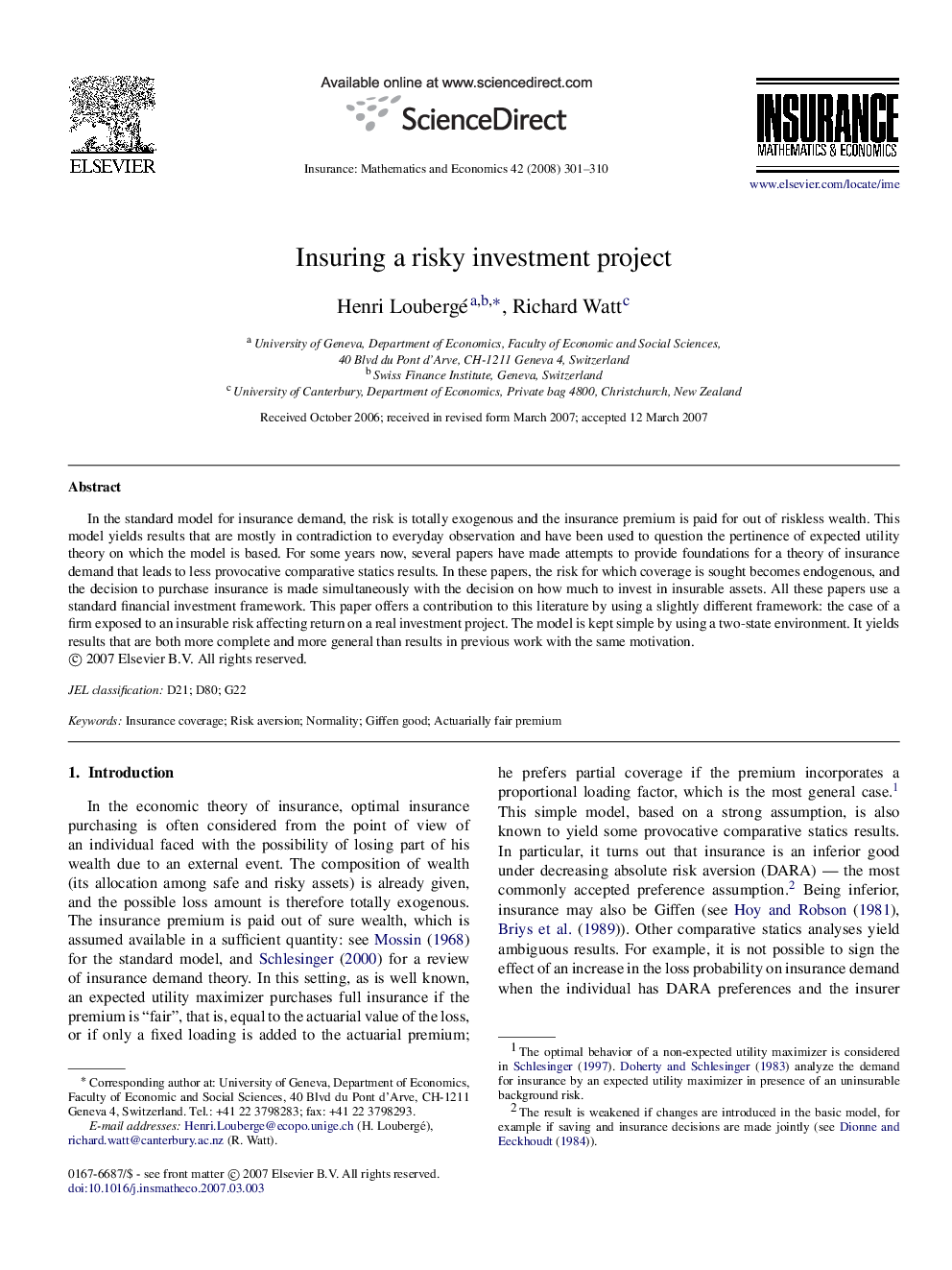| Article ID | Journal | Published Year | Pages | File Type |
|---|---|---|---|---|
| 5077373 | Insurance: Mathematics and Economics | 2008 | 10 Pages |
Abstract
In the standard model for insurance demand, the risk is totally exogenous and the insurance premium is paid for out of riskless wealth. This model yields results that are mostly in contradiction to everyday observation and have been used to question the pertinence of expected utility theory on which the model is based. For some years now, several papers have made attempts to provide foundations for a theory of insurance demand that leads to less provocative comparative statics results. In these papers, the risk for which coverage is sought becomes endogenous, and the decision to purchase insurance is made simultaneously with the decision on how much to invest in insurable assets. All these papers use a standard financial investment framework. This paper offers a contribution to this literature by using a slightly different framework: the case of a firm exposed to an insurable risk affecting return on a real investment project. The model is kept simple by using a two-state environment. It yields results that are both more complete and more general than results in previous work with the same motivation.
Related Topics
Physical Sciences and Engineering
Mathematics
Statistics and Probability
Authors
Henri Loubergé, Richard Watt,
